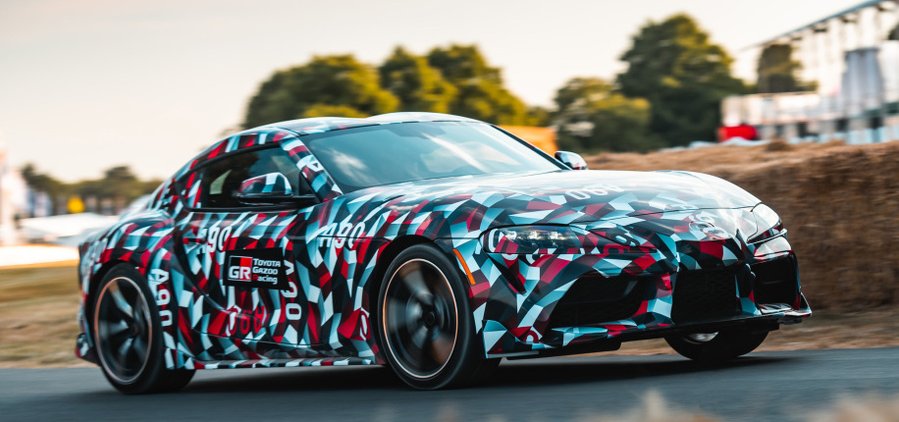2019 Toyota Supra reportedly getting a four-cylinder model

When we last spoke with Toyota's chief engineer Tetsuya Tada, he made it clear that the 2019 Toyota Supra had to have a straight-six under the hood. After all, it had been the hallmark of the car ever since it was introduced as a six-cylinder variant of the Toyota Celica. But according to Road & Track, the Supra will also have a turbocharged four-cylinder option, based on documents from ZF, the company that's making the transmissions for the Supra and Z4, and a confirmation from Tada to one of the outlet's editors. Road & Track also reports the engine will make 262 horsepower compared with the six-cylinder's 335 horsepower.
The prospect of a less expensive Supra with a four-cylinder engine, balanced weight distribution and focus on fun driving certainly sounds interesting. It also sounds a heck of a lot like another car Toyota already sells: the 86. Now certainly the Supra will be distinguished by the extra 60 horsepower, but we can't help but feel that adding this version of the Supra makes things a bit crowded in the dealership, with the 86 potentially suffering the most. It might be hard to get someone into an 86 when there's a similarly sized Supra offering more power. Plus the 86 name isn't as famous and respected as the Supra name, nor is it as premium an offering as even the four-cylinder Supra may be.
There might be some hope for the 86. Toyota may price the Supra much higher than the 86, possibly to compete with vehicles such as the Porsche 718 Cayman and Jaguar F-Type. Both of those vehicles start at comfortably over $50,000, so putting even the base Supra at over $40,000 could be possible, if that's the market Toyota is aiming for. That would allow plenty of breathing room for the Toyota 86 that starts at under $30,000.
Still, there are other potential hurdles for the 86, as our own Senior Editor Alex Kierstein points out. Sales of the Scion refugee 86 have never been great, and they've been on the decline as it gets older (2018 is its sixth year on the market). Having two sports cars on two different platforms doesn't make much sense either, especially when one could be a high-end halo product that will likely be much more profitable than the low-margin 86. And considering the rough working relationship Toyota and Subaru had when developing the 86 and BRZ, Toyota probably doesn't want to try and make a second generation together.
Of course this is all speculation, but we doubt the near-future Toyota sports car landscape can't stay the same for very long. Time will tell whether both or only one of the models survive.
Related News


